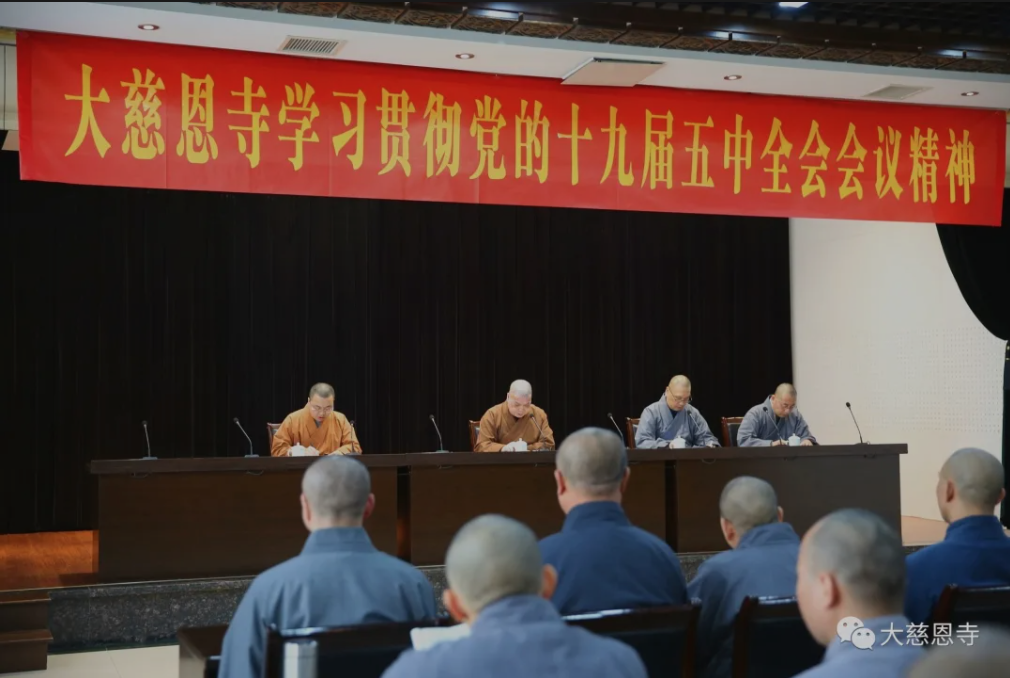
Located in Xi’an, Da Ci’en Temple (大慈恩寺) is one of Chinese oldest Buddhist sites, its history stretching back 1,360 years. The temple is home to the Great Wild Goose Pagoda, a five-story structure built in the 600s to house religious texts and artifacts brought to China from India by Xuanzang, a scholar and pilgrim who departed from the ancient Tang imperial capital of Chang’an (Xi’an) in 629 AD to make a colorful journey of Buddhist study that lasted almost 17 years and covered scores of kingdoms in Central Asia and India.
Having distinguished himself in India for his scholarship, Xuanzang eventually returned with great fanfare to the imperial capital. As abbot of Da Ci’en Temple – declining Emperor Taizong’s offer of an official position – he devoted the rest of his life to the translation of core works of Buddhism from sanskrit, including the most essential Mahayana scriptures. Xuanzang’s return to China marked a new era for translation, a time of immense cultural exchange. Centuries later, the monk’s legendary pilgrimage would inspire one of the great classical novels of Chinese literature, Wu Cheng’en’s Journey to the West.
What role does Da Ci’en Temple play in China today? It remains an active center of Buddhist study, and it is of course a major tourist attraction, granted UNESCO World Heritage status in 2014. In the midst of now worsening relations between China and India, Da Ci’en Temple also remains a symbol of friendship and cultural exchange between the two countries. When Indian Prime Minister Narendra Modi made an official visit to China in May 2015, he paid a visit to the temple.
But Da Ci’en Temple can also be understood as a symbol today of just how deeply the politics and ideology of the Chinese Communist Party have permeated all aspects of Chinese life, including religion.
“The Party leads all,” Xi Jinping has regularly asserted. And on the afternoon of November 6, the Da Ci’en Temple organized a study conference attended by all “long-term residents and employees” that “led all in the devoted study” of the Communique of the Fifth Plenum of the 19th Central Committee of the Chinese Communist Party, and of the official People’s Daily commentary, “Struggling to Seize New Victories in the Comprehensive Building of a Modern Socialist Nation” (奋力夺取全面建设社会主义现代化国家新胜利).

A summary of the study session posted to the official WeChat account of the Da Ci’en Temple on November 6 quoted the temple’s master (大和尚) as saying that “the Fifth Plenum was an important and comprehensive meeting with historical significance that will usher our country into a new stage of development, at a critical moment in the realization of the great rejuvenation of the Chinese people.”
The master demanded, according to the post, that “everyone must mobilize all positive factors, grasping the essence of the plenary session, unifying thought and action around the spirit of General Secretary Xi Jinping’s important speech, and continuing to use the spirit of the plenary session in carrying out work and guiding practice.”

The next section of the report mentions the need to “further enhance” the “Four Consciousnesses,” “Four Confidences” and “Two Protections.” The “Four Consciousnesses” and “Four Confidences” are phrases critical to the consolidation of Xi Jinping’s personal power as leader of the CCP. The former refers to 1) the need to maintain political integrity, 2) think in big-picture terms, 3) uphold the leadership core (meaning Xi Jinping and his inner circle), and 4) keep in alignment with the CCP’s central leadership. The latter refers to: 1) confidence in the path of socialism with Chinese characteristics, 2) confidence in the theories of the CCP, 3) confidence in the system (meaning the system of governance of the CCP), and 4) confidence in China’s unique civilization.
Together with the “Two Confidences” – which point to the need to 1) protect the core status of General Secretary Xi Jinping, and 2) protect the central, unified leadership of the Central Committee of the CCP – these phrases form the so-called “442” formula now used to signal loyalty to Xi Jinping and his leadership of the CCP.
Revealingly, the 442 formula is linked in the post directly with the need to “make steady progress in promoting the Sinicization of Buddhism” (稳步推进佛教中国化进程).

Da Ci’en Temple is a prime example in point of how Buddhism has undergone a process of Sinicization since the end of the Han dynasty in the second century AD, and Xuanzang was of course himself a central figure in this process. Unmistakably, however, this latest phase of “Sinicization” is about the re-framing of Buddhism around the political imperatives of the Chinese Communist Party.
It is the CCP’s hope that Buddhism continue to thrive as a key aspect of China’s resplendent traditional culture — so long as Xi Jinping is securely at its core.
[Featured Image: Da Ci’en Temple photographed in 2009. Photo by Kevin Poh available at Flickr.com under CC license.]





















